By R.A. Cox and J.E. Klett*(12/13); Revised by S. K. Prentice (4/23)**

Quick Facts…
- Use shrubs for screening, privacy, windbreaks, wildlife habitats, landscape color and texture.
- Deciduous shrubs provide a seasonal change of interest in the landscape.
- Well-placed shrubs take into account available space, exposure and soil conditions.
- Table 1 lists shrubs for elevations below 6,000 feet that are widely available in garden centers and nurseries.
Shrubs are immediately noticeable in the landscape because they are at eye level. Flower and fruit displays, interesting foliage shapes and colors, and even bark color and texture add interest. Shrubs can visually anchor a building to a site, guide the eye toward or away from certain views, and bridge the space between lower-growing perennials and taller trees. Deciduous shrubs offer seasonal changes not found with evergreen shrubs.
Because of their varied size, shrubs are versatile landscape performers. A 2-foot shrub can complement perennials in the flower bed, while a 20-foot hedge can screen even the largest property. Some shrubs may be pruned to a single or few stems for growth as small specimen trees. Pruning others flat to decorate a wall in an espalier can provide a focal point for a courtyard or walkway. Space shrubs singly or mass them in small odd-numbered groups to fill in a shrub border. Spacing closely in a line will allow plants to grow into a hedge or screen. The spacing at planting depends on the growth habit and mature size of the shrub species, as well as the intended purpose.
Before purchasing shrubs, decide the function you need them to perform in the landscape.
Are you interested in screening an undesirable view, intercepting the glare of car headlights from the street, hiding the house foundation, reducing the wind velocity, attracting birds, or adding flowers or fall color?
After determining the function, write down a description of the intended planting site to include soil texture (clay, sand, etc.), available moisture, and exposure (compass direction and sunny vs. shady). Remember, as landscapes mature, a sunny site may change to a shady one.
Colorado growing conditions present both challenges and opportunities. Dry, sunny days and cool nights make plant diseases relatively rare and prolong or intensify flowering. Late frosts may damage the flowers of spring flowering shrubs. Soil conditions often are not conducive to growing certain species. Both climate and soil conditions vary widely across the state, meaning some shrubs may grow well in one area but not in others.
The following list, while not comprehensive, provides information on the more commonly available deciduous shrubs for elevations below 6,000 feet. For a listing of shrubs adapted to higher elevations, refer to fact sheet 7.423, Trees and Shrubs for Mountain Areas. Drought-tolerant shrubs are listed in 7.229, Xeriscaping: Trees and Shrubs. Native shrubs suitable for landscapes are listed in 7.422, Native Shrubs for Colorado Landscapes.
Small Deciduous Shrubs (less than 4 feet when mature)
Berberis thunbergii atropurpurea (Purpleleaf Japanese Barberry)
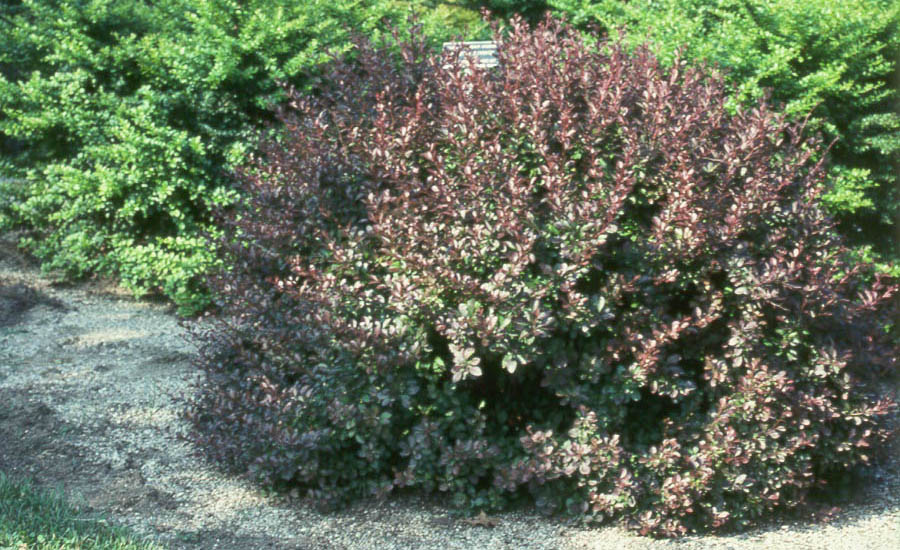
- Soil Moisture: L-M
- Exposure: S-PSh
- Flower Color and Month: Y/5-6
- Fruit: R
- Fall Color: R-Pu
- Comments: Reddish-purple foliage
Caryopteris x clandonensis (Blue Mist Spirea)
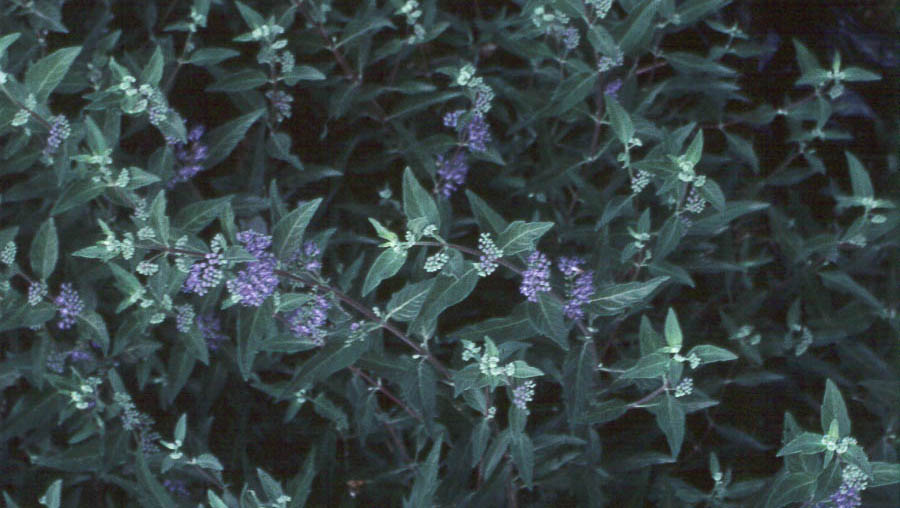
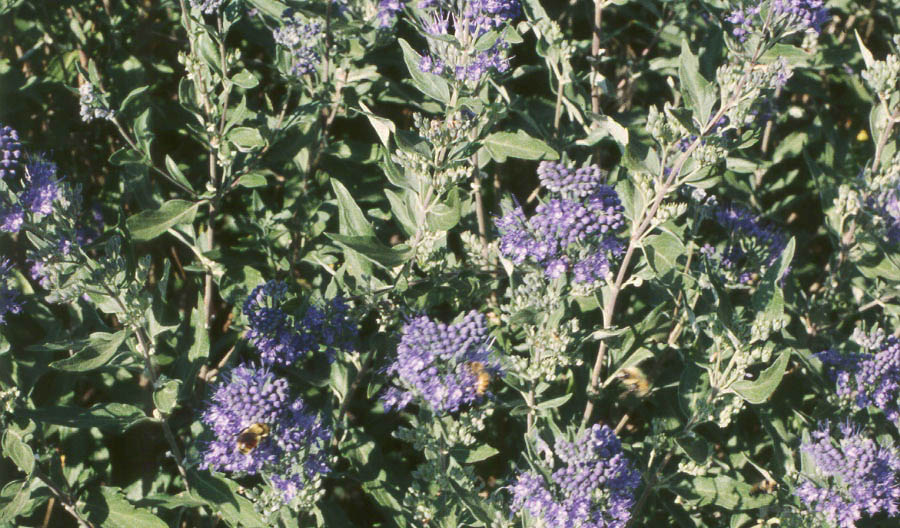

- Soil Moisture: L-M
- Exposure: S-PSh
- Flower Color and Month: BI-p/7-9
- Fruit: Tan
- Fall Color: NI
- Comments: Cut back in late winter.
Cotoneaster apiculatus (Cranberry Cotoneaster)

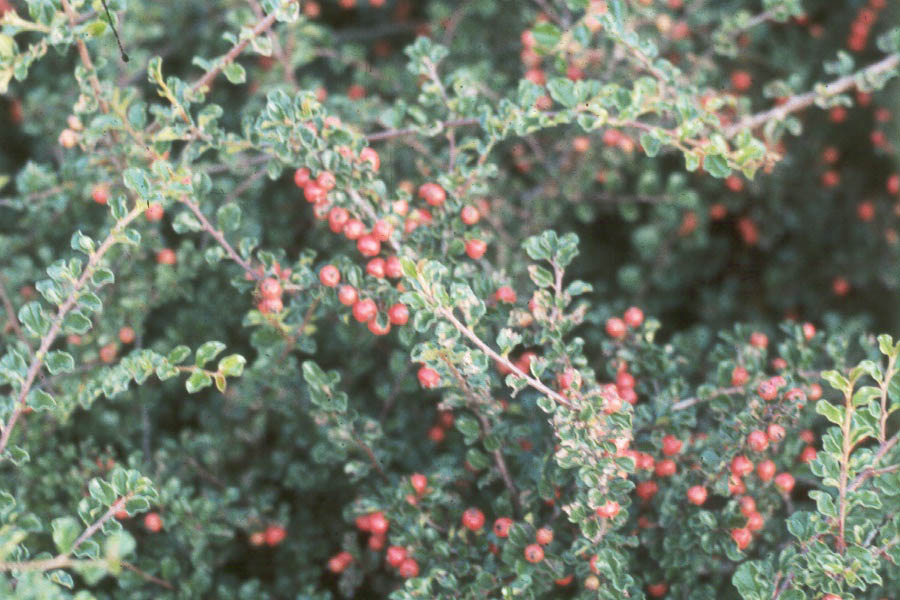

- Soil Moisture: M
- Exposure: S-PSh
- Flower Color and Month: P/5
- Fruit: R
- Fall Color: R
- Comments: Mounded habit.
Cornus sericea Farrow (Kelsey Dogwood)

- Soil Moisture: H
- Exposure: S-PSh
- Flower Color and Month: NI
- Fruit: NI
- Fall Color: R-Pu
- Comments: Mounded; red stems.
Hydrangea arborescens (Smooth Hydrangea – Annabelle)
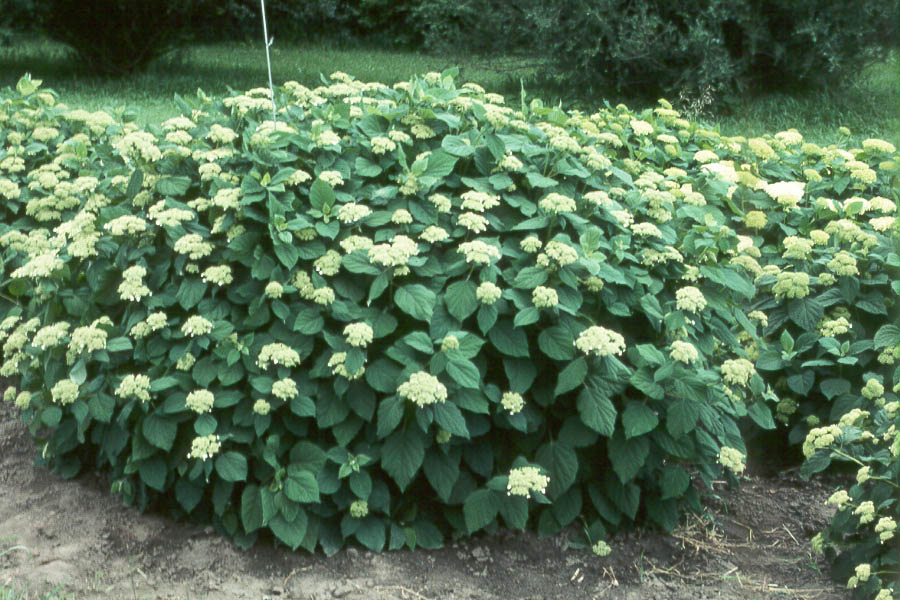

Soil Moisture: M-H
Exposure: Sh-PSh
Flower Color and Month: W/7-9
Fruit: NI
Fall Color: NI
Comments: Large, showy flowers.
Medium Deciduous Shrubs (4-6 feet when mature)
Aronia melanocarpa (Black chokeberry)
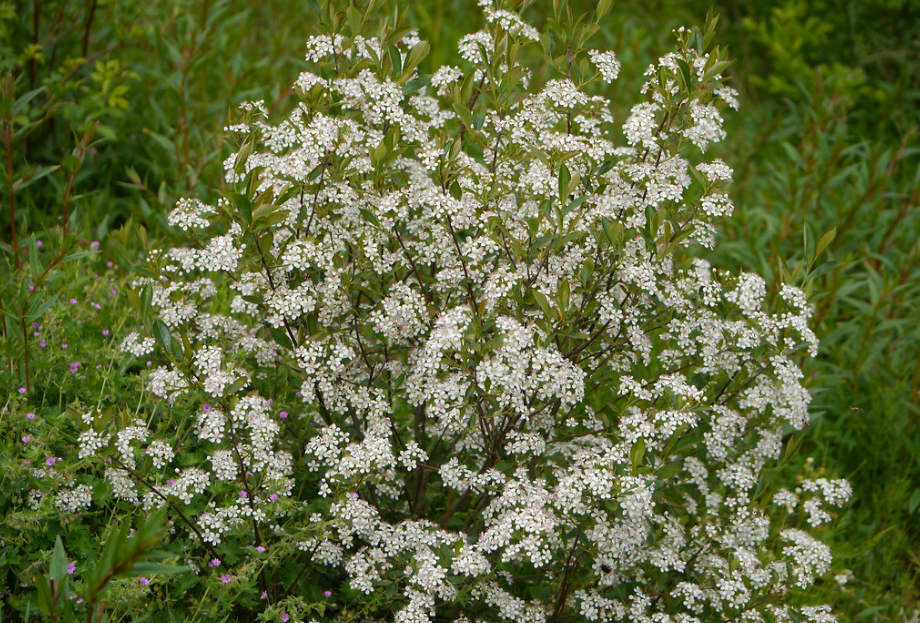
- Soil Moisture: M-H
- Exposure: S-PSh
- Flower Color and Month: W/5-6
- Fruit: B
- Fall Color: O-R
- Comments: Glossy green foliage.
Cornus sericea – ‘Isanti’ (Redtwig Dogwood)
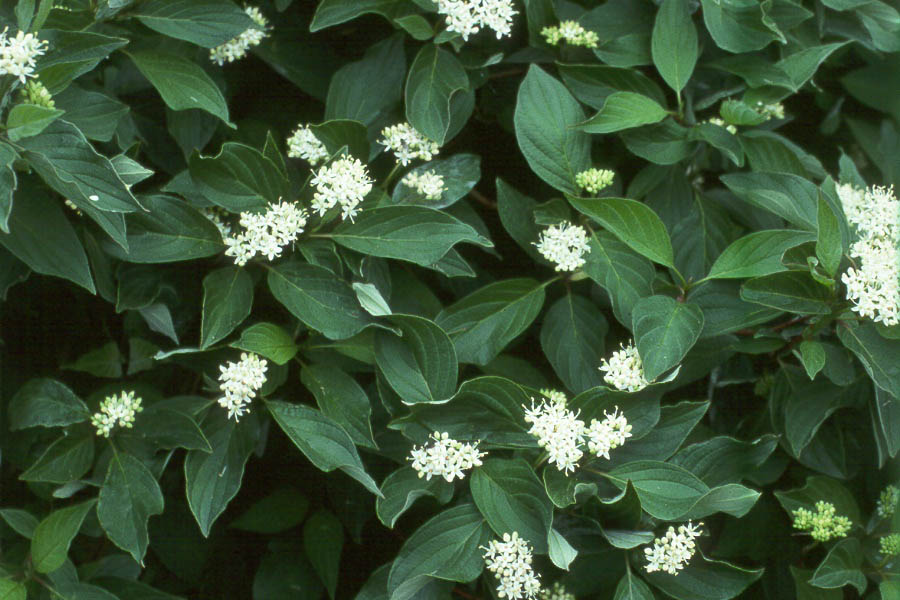

- Soil Moisture: M-H
- Exposure: S-PSh
- Flower Color and Month: W/5-6
- Fruit: W
- Fall Color: R-Pu
- Comments: Red twigs; compact habit.
Euonymus alatus – ‘Compacta’ (Compact burning bush)
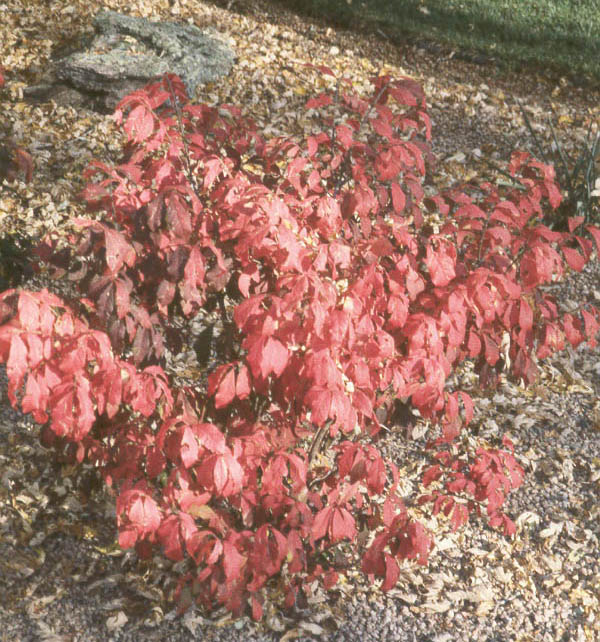
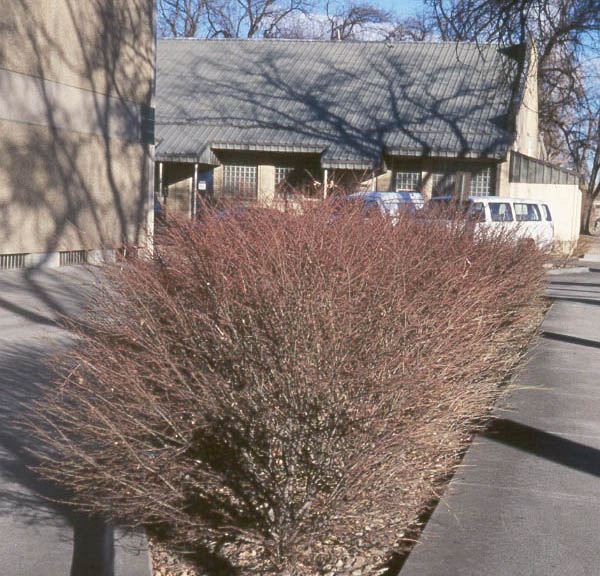
- Soil Moisture: M
- Exposure: S-Sh
- Flower Color and Month: NI
- Fruit: P/O
- Fall Color: R
- Comments: Slightly winged twigs.
Philadelphus coronarius – ‘Aureus’ (Golden Mockorange)
- Soil Moisture: M-H
- Exposure: S
- Flower Color and Month: W/5-6
- Fruit: NI
- Fall Color: NI
- Comments: Yellow foliage all season.
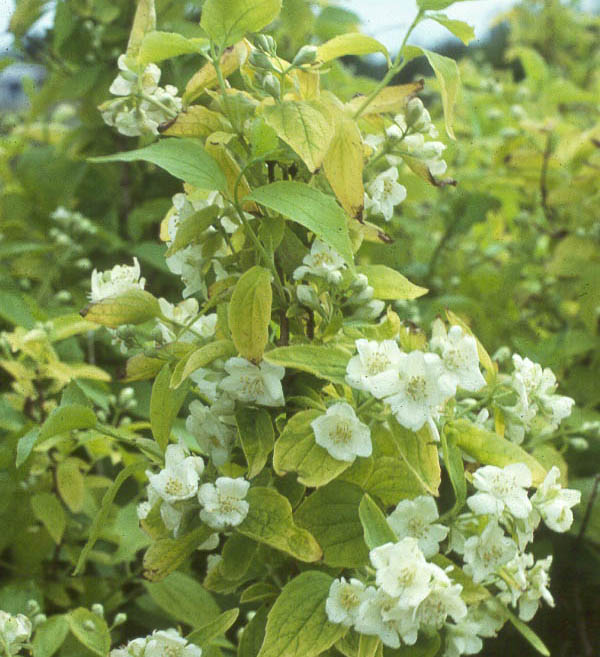
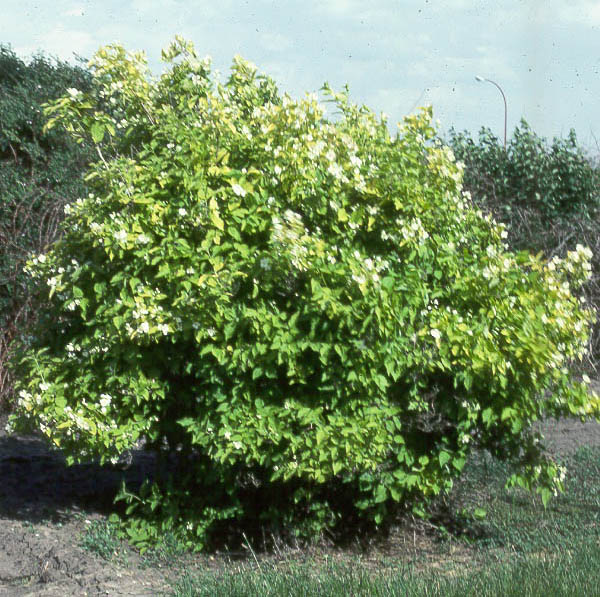
Physocarpus opulifolius ‘Seward’ – (Summer Wine Ninebark)
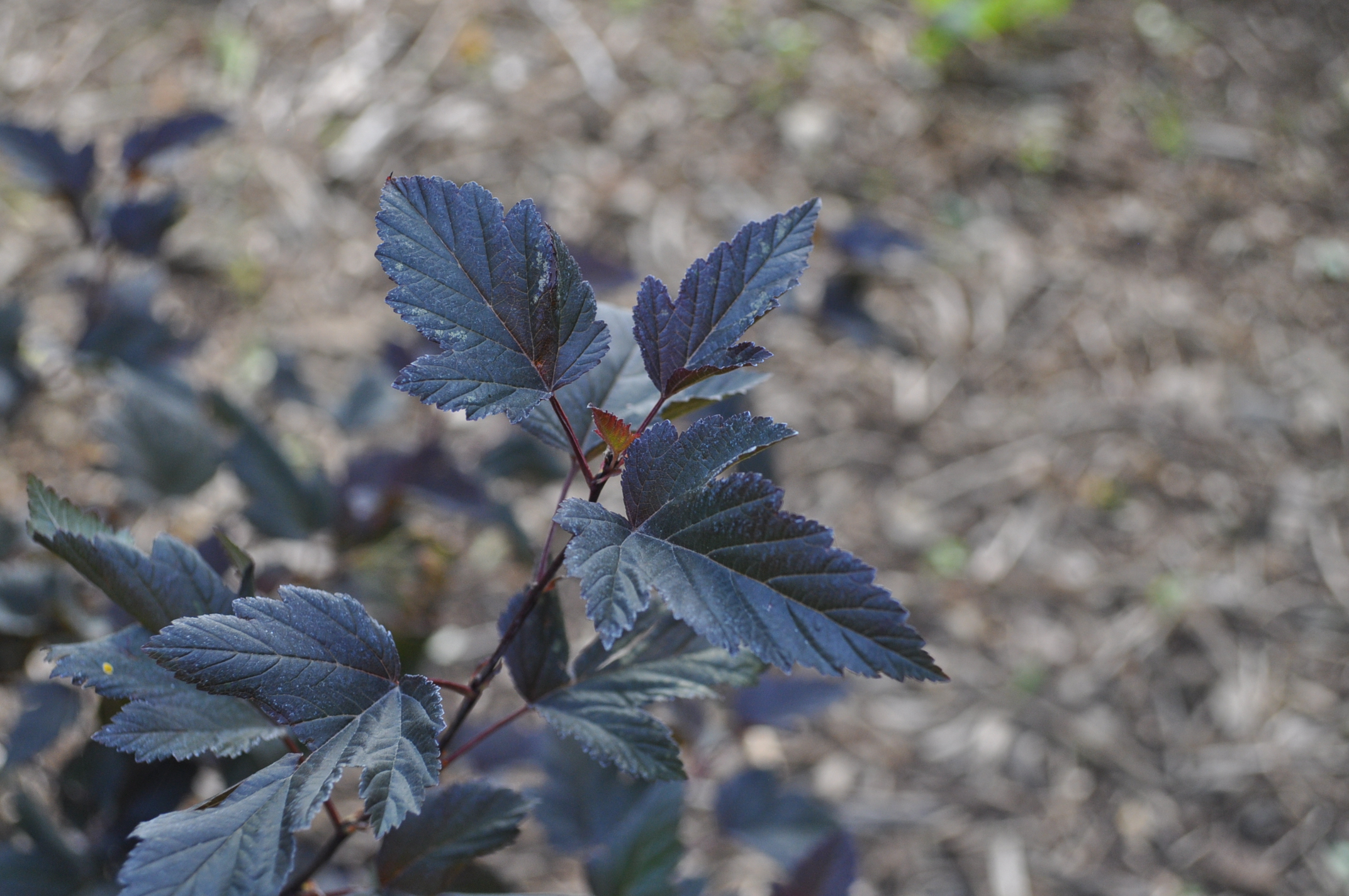
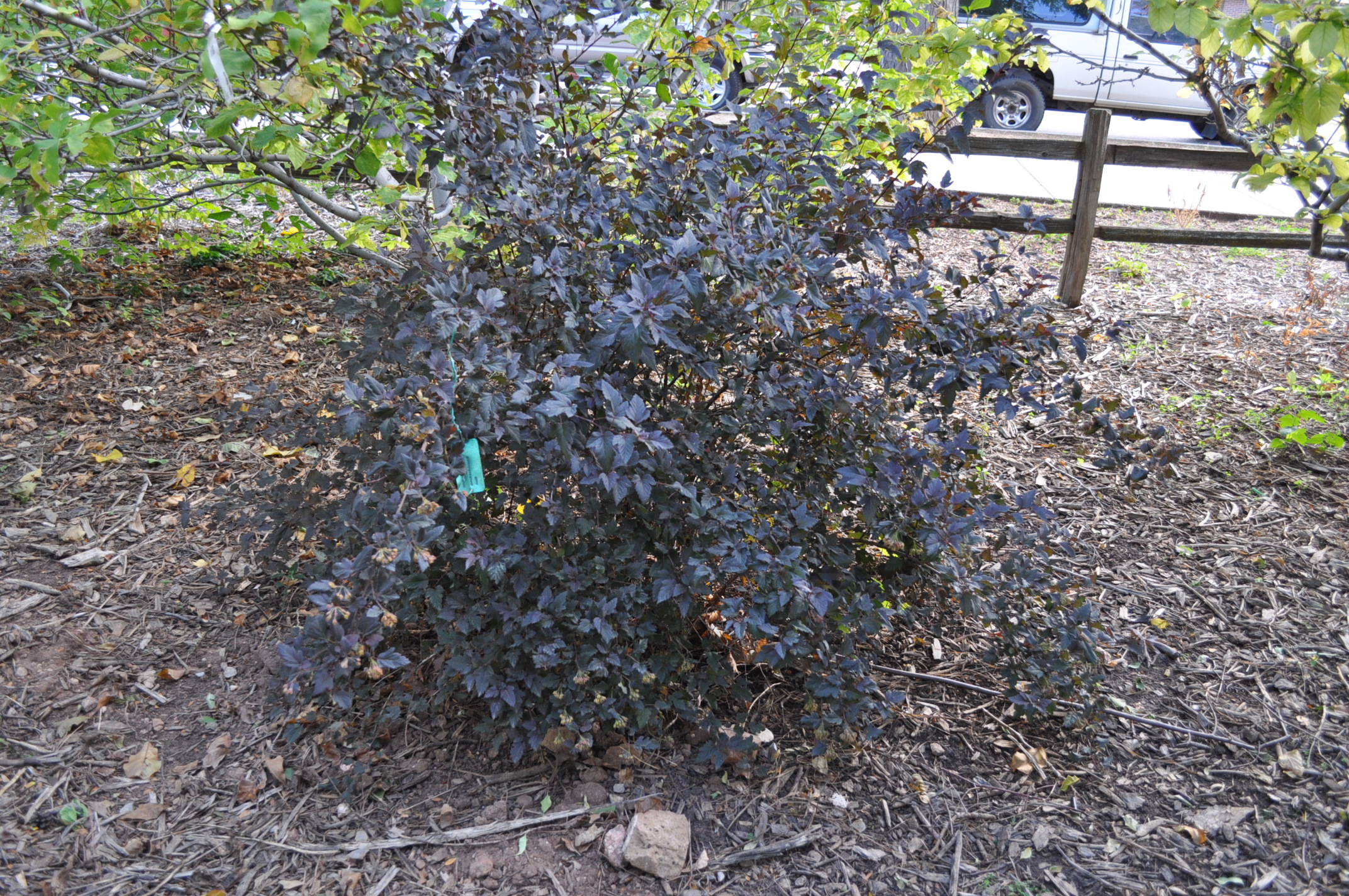
- Soil Moisture: L-M
- Exposure: S
- Flower Color and Month: W/5-6
- Fruit: NI
- Fall Color: Y-O
- Comments: Reddish-purple foliage, compact habit.
Large Deciduous Shrubs (more than 6 feet when mature)
Cornus sericea (Redtwig Dogwood)
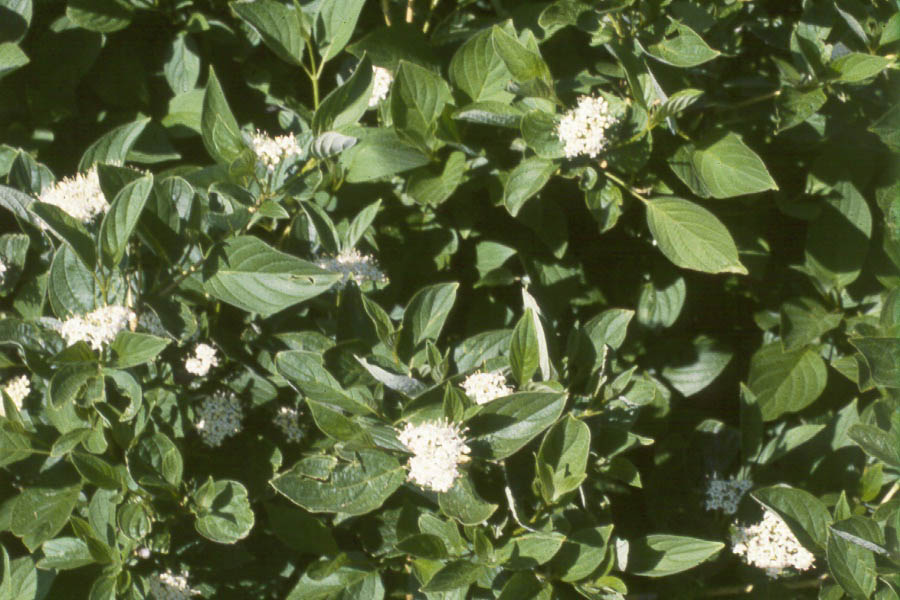
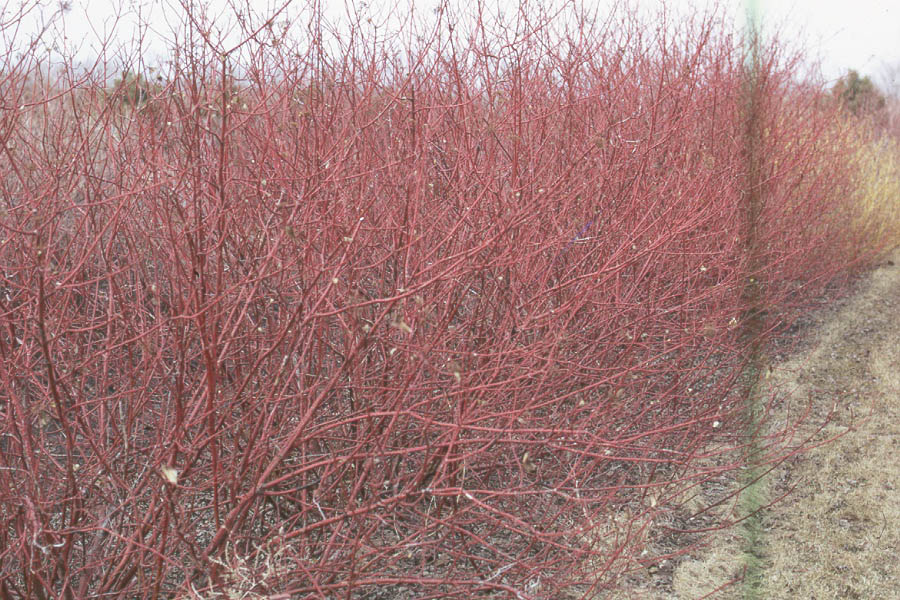
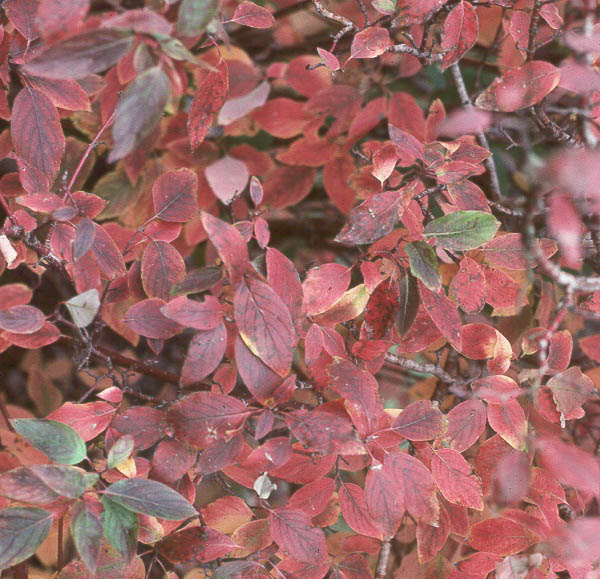
- Soil Moisture: M-H
- Exposure: S-PSh
- Flower Color and Month: W/5-6
- Fruit: W-Bl
- Fall Color: R-Pu
- Comments: Red stems in winter.
Hibiscus syriacus (Rose-of-Sharon or Shrub Althea)
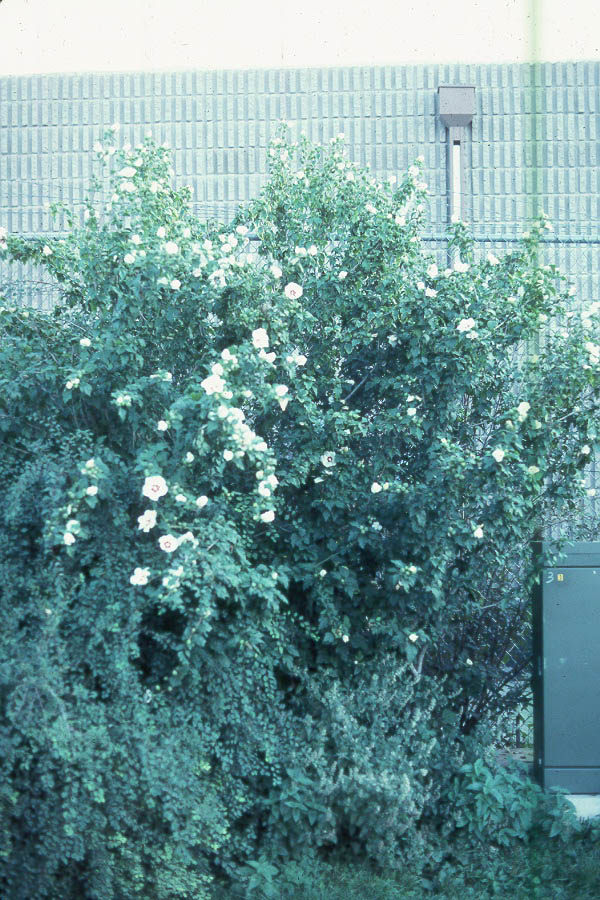
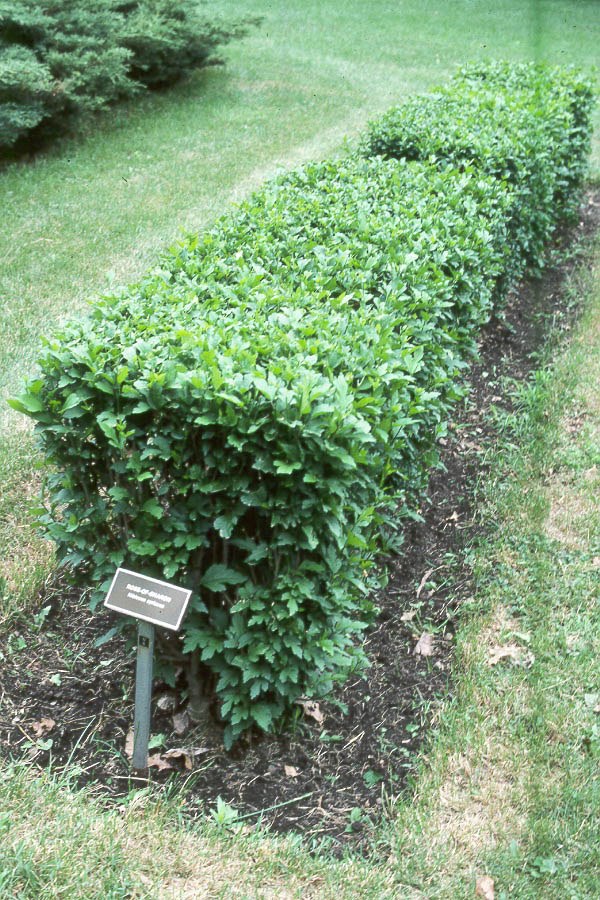

- Soil Moisture: M
- Exposure: S-PSh
- Flower Color and Month: V/7-8
- Fruit: NI
- Fall Color: NI
- Comments: Showy, late flowers.
Amelanchier alnifolia (Standing Ovation Serviceberry)
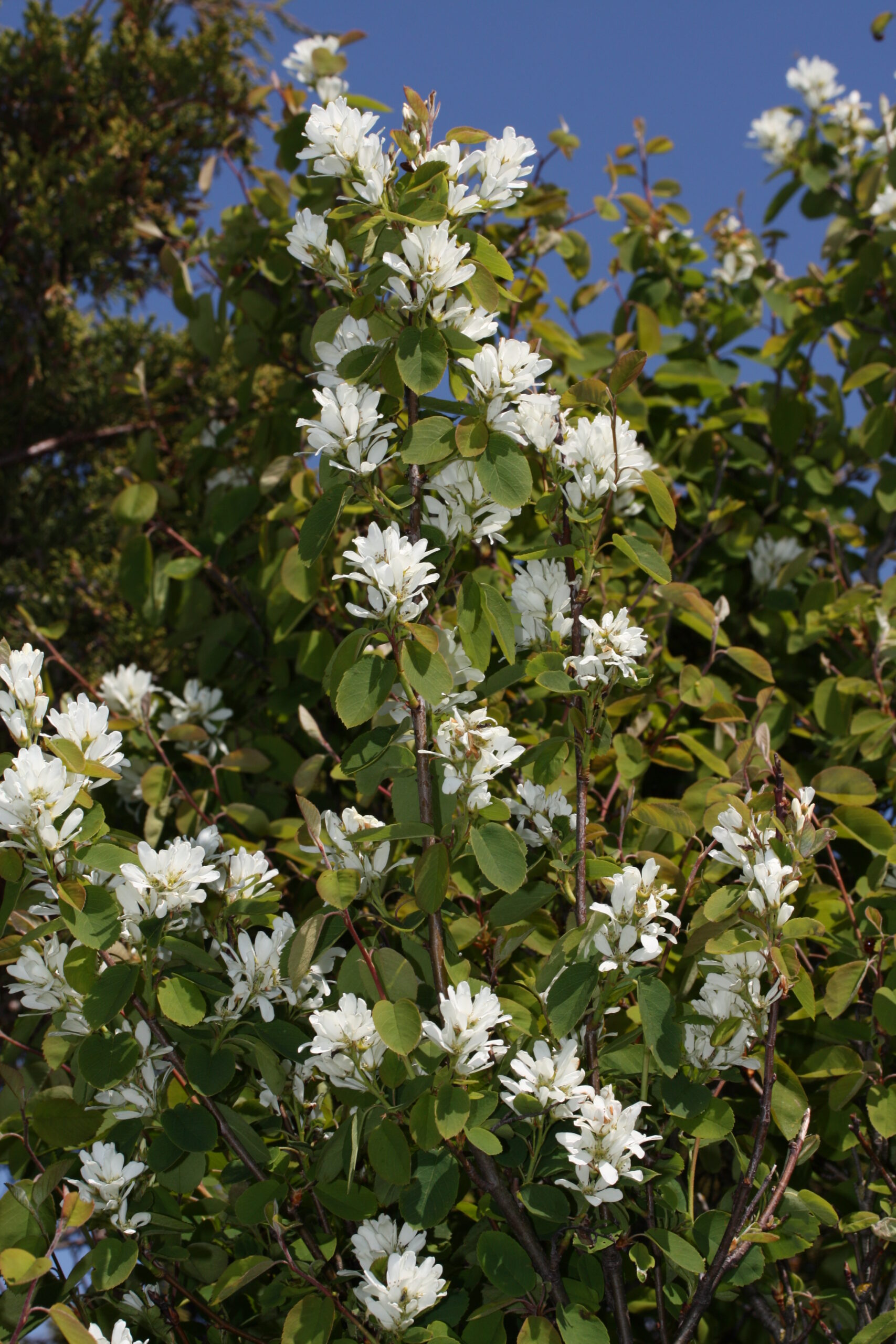
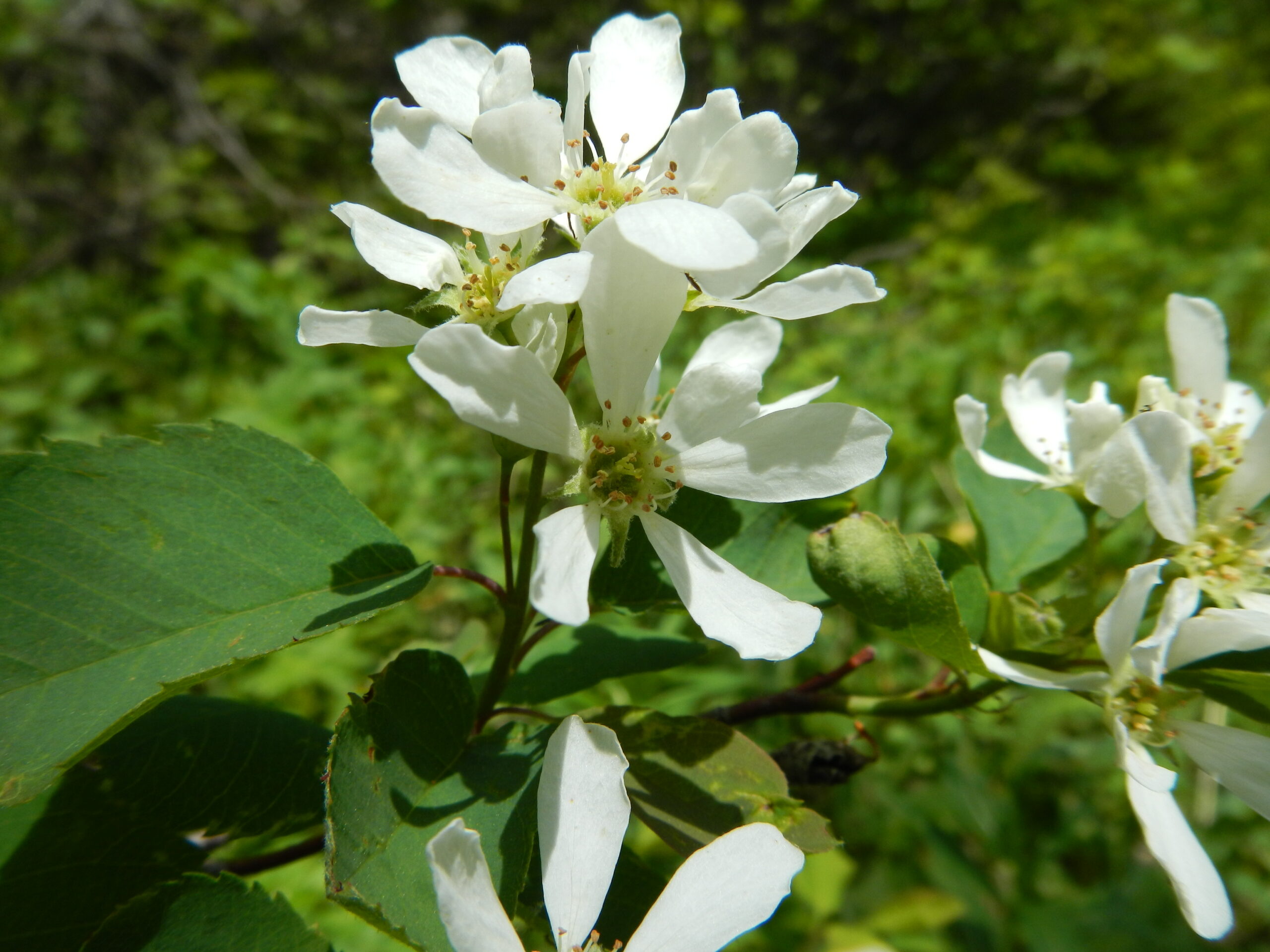
- Soil Moisture: L-M
- Exposure: S-PSh
- Flower Color and Month: W/4-5
- Fruit: B-Pu
- Fall Color: YOR
- Comments: Narrow, upright oval habit. Mid=sized shrub with sweet fruit.
Euonymus europaeus (Spindletree)
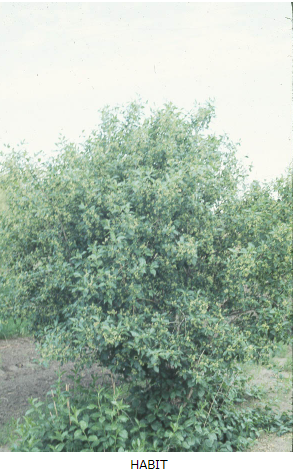
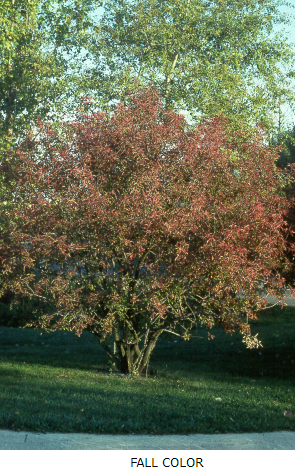
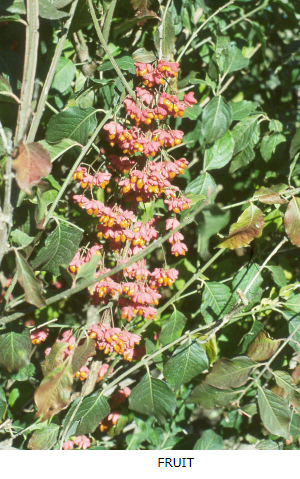
- Soil Moisture: M
- Exposure: S-Sh
- Flower Color and Month: NI
- Fruit: R-PU/O
- Fall Color: R-Pu
- Comments: Shrub or small tree.
Philadelphus x virginalis (Mockorange)

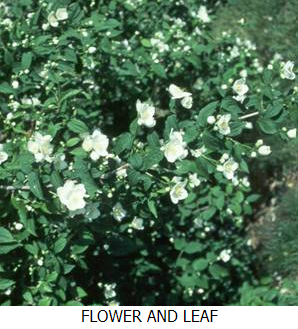
- Soil Moisture: M-H
- Exposure: S-PSh
- Flower Color and Month: W/5-6
- Fruit: NI
- Fall Color: NI
- Comments: Fragrant flowers; course texture.
Abbreviation Guide
- Soil moisture: L=Low M=Medium H=High
- Exposure: S=Sun PSh=Partial shade Sh=Shade
- Flower color: Bl=Blue G=Green L=Lavender P=Pink Pu=Purple R=Red W=White Y=Yellow V=varies with cultivar
- Fruit: B=Black Bl=Blue O=Orange P=Pink Pu=Purple R=Red W=White Y=Yellow NI=Not Important
- Fall color: Br=Bronze O=Orange Pu=Purple R=Red Y=Yellow NI=Not Important
- NI=Not Important
1 R.A. Cox, Colorado State University Extension horticulture agent, Arapahoe County; and J.E. Klett, Extension horticulture specialist, horticulture and landscape architecture 10/97. Revised 12/13.
Colorado State University, U.S. Department of Agriculture, and Colorado counties cooperating. CSU Extension programs are available to all without discrimination. No endorsement of products mentioned is intended nor is criticism implied of products not mentioned.
Go to top of this page.





